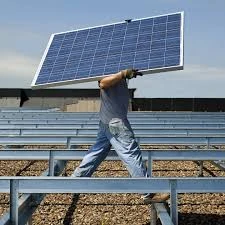solar string inverter vs central inverter
Solar String Inverter vs. Central Inverter A Comparative Analysis
In the rapidly evolving solar energy sector, choosing the right inverter is crucial for optimizing system performance and ensuring the longevity of solar setups. Two prominent types of inverters used in solar photovoltaic (PV) systems are string inverters and central inverters. Each of these options presents unique advantages and disadvantages depending on the scale of the installation and specific energy needs. This article delves into the key contrasts between solar string inverters and central inverters to help you make an informed decision.
Understanding the Basics
A string inverter operates on a modular basis, where a series of solar panels (or strings) are connected to a single inverter. They are widely used in residential and small commercial installations due to their simplicity and lower initial costs. In contrast, central inverters manage a much larger array of solar panels, typically employed in utility-scale solar farms where high power output is required. Central inverters consolidate the energy produced by larger groups of panels, making them more efficient in handling vast amounts of power.
Performance and Efficiency
One of the primary benefits of string inverters is their ability to optimize power generation at the panel level. If one panel in a string is shaded or otherwise underperforming, it will not significantly impact the rest of the panels in that string, thanks to the maximum power point tracking (MPPT) technology they employ. This feature increases the overall efficiency of smaller installations, especially in environments where shading, debris, or differing orientations can affect panel performance.
On the other hand, central inverters generally have higher efficiency ratings due to their ability to harness larger amounts of energy and minimize losses associated with wiring over long distances. However, if one panel underperforms, it can affect the entire array connected to that central inverter, potentially leading to decreased energy output.
Installation and Maintenance
solar string inverter vs central inverter

String inverters are typically easier and more cost-effective to install. Because they are installed close to the solar arrays, installation considerations are often simplified. Maintenance is also relatively straightforward, as issues can usually be diagnosed at the individual inverter or panel level.
Central inverters, while efficient for large-scale operations, can present challenges in both installation and maintenance. Their size requires significant planning and infrastructure, and they often need dedicated spaces and larger wiring systems. Additionally, since they are centralized, any failure in the inverter could lead to complete downtime for the entire solar array, resulting in significant energy loss until repairs are made.
Scalability and Flexibility
When it comes to scalability, string inverters offer greater flexibility, making them an excellent choice for residential systems that may be expanded in the future. Homeowners can add more strings as their energy needs grow without having to replace existing equipment. In contrast, central inverters may require a more complex upgrade process, often necessitating a complete system overhaul to increase capacity.
Cost Considerations
While upfront costs vary, string inverters generally come with lower initial investments, making them more attractive for homeowners and smaller businesses. However, it is essential to consider total lifecycle costs, including maintenance and potential replacements over time. Central inverters, while more expensive initially, can lead to lower installation costs per watt in larger systems.
Conclusion
Ultimately, the choice between solar string inverters and central inverters depends on the specific needs of the installation. For residential and smaller commercial applications that prioritize flexibility, ease of installation, and performance optimization under varying conditions, string inverters are typically the better choice. Conversely, for large-scale projects aiming for maximum efficiency and power output, central inverters may be more advantageous despite their complexities. Understanding these differences will enable you to select the inverter that aligns best with your solar energy goals.
-
Unlocking Energy Freedom with the Off Grid Solar InverterNewsJun.06,2025
-
Unlock More Solar Power with a High-Efficiency Bifacial Solar PanelNewsJun.06,2025
-
Power Your Future with High-Efficiency Monocrystalline Solar PanelsNewsJun.06,2025
-
Next-Gen Solar Power Starts with Micro Solar InvertersNewsJun.06,2025
-
Harnessing Peak Efficiency with the On Grid Solar InverterNewsJun.06,2025
-
Discover Unmatched Efficiency with the Latest String Solar InverterNewsJun.06,2025







